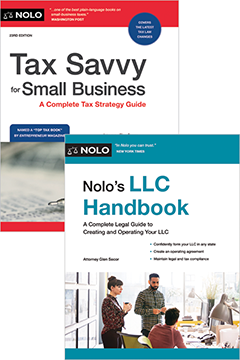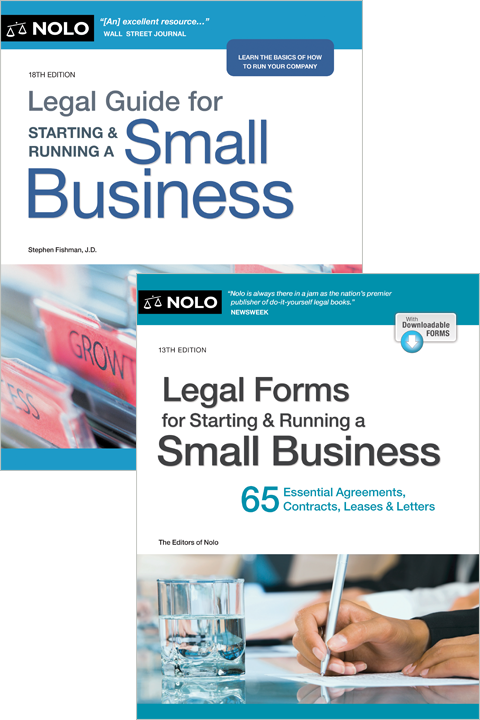An LLC or corporation's owners, members, or shareholders may be on the hook personally for business debt.
Many business owners choose to form a corporation or limited liability company (LLC) because of the limited liability these business structures offer their owners. By creating a corporation or LLC, owners generally won't be held responsible for their business's debts and obligations.
But sometimes courts will hold an LLC or corporation's owners, members, and shareholders personally liable for business debts. When this instance of accountability happens, it's called "piercing the corporate veil."
Limited Liability for Corporations and LLCs
Corporations and LLCs are legal entities, separate and distinct from the people who create and own them. A primary draw of corporations and LLCs is their limited liability.
"Limited liability" means that the owners of a business have limited liability for their business's debts, liabilities, and obligations. In other words, the owners typically aren't personally responsible for honoring the debts, obligations, and liabilities that their business takes on.
For example, suppose Jamal, Mabel, and Selena form an LLC for their shoe repair shop. In the beginning, the LLC takes out a small business loan for $50,000. The members prioritize the business debt and make regular, timely payments for the first two years. However, the economy takes a downturn, and business quickly declines for the trio. The LLC doesn't have the funds to keep making payments, and the company defaults on the loan. Because the loan was taken out under the LLC's name, the lender can only come after the business and not the LLC members to pay the debt. The lender can't force Jamal, Mabel, or Selena to use their personal money to repay the loan. Instead, the lender has to proceed in its debt collection efforts against the LLC itself.
What Kinds of Businesses Have Limited Liability?
Corporations and LLCs, including single-member LLCs, are probably the most popular limited liability business structures. But other types of businesses offer limited liability as well, including special kinds of partnerships:
- Limited partnerships (LPs): Limited partners in an LP have limited liability. General partners in an LLP don't have limited liability and can be held personally liable for the business's debts.
- Limited liability partnerships (LLPs): All partners have limited liability protection. These partners only risk the money they initially invest in the partnership.
- Limited liability limited partnerships (LLLPs): All partners have limited liability.
Importantly, sole proprietorships and general partnerships don't have limited liability. Sole proprietors and general partners are jointly and severally liable for their business's debts and obligations.
Who Is Protected by Limited Liability?
In short, the business's owners enjoy limited liability in a corporation or LLC. In addition to the owners, decision makers in these limited liability structures also have limited liability.
LLCs offer limited liability protection to:
- LLC members (owners), and
- LLC managers (which can but don't have to be owners).
Corporations offer limited liability protection to:
- shareholders (owners)
- directors, and
- officers.
However, there are some instances when these owners and decision makers will be held personally liable for a business's obligations (as discussed later).
What Happens When the Corporate Veil is Pierced?
In certain situations, courts can ignore the limited liability status of a corporation or LLC and pierce the corporate veil. In effect, the court can hold a corporation's officers, directors, and shareholders or an LLC's members and managers personally liable for company debts.
Closely-held corporations (corporations owned by one or just a few people) and small LLCs, including single-member LLCs, are most likely to get their veils pierced.
If a court pierces a company's corporate veil, the owners and decision makers can be personally on the hook for company debts. To satisfy the debt, creditors can go after the owners' personal assets, including:
- homes
- vehicles
- bank accounts
- investments, and
- other personal property.
Although courts typically will impose personal liability only on those individuals who are responsible for the corporation's or LLC's wrongful or fraudulent actions. They won't hold innocent parties personally liable for company debts.
When Courts Will Pierce the Corporate Veil
States and courts within states differ on when the corporate veil should be pierced. In general, it's usually difficult for someone to pierce the corporate veil and hold individuals responsible for LLC or corporate action.
Many courts engage in some variation of a two-part test when deciding whether to pierce the corporate veil.
Is the Company Truly a Separate Entity From Its Owners?
If the owners fail to maintain a formal legal separation between their business and their personal financial affairs, a court could find that the corporation or LLC is really just a sham (the owners' alter ego). In effect, the owners are personally operating the business as if the corporation or LLC didn't exist.
For instance, suppose Ricky creates a single-member LLC to run his pottery business. He pays his personal bills, including his streaming subscriptions and credit card debt, using his business checking account. Ricky also doesn't draft an operating agreement for his LLC, and commonly interchanges his name and his business's name when sending invoices and signing contracts. Ricky soon drains his business of money and defaults on a small business loan he took out for his LLC six months prior. A court could decide that Ricky isn't entitled to the limited liability that the LLC business structure would ordinarily provide because he treated his LLC and himself as one and the same.
Did the Owners or Decision Makers Engage in Fraud or Wrongful Conduct?
A court could find that there was financial fraud or wrongful conduct if an owner acted recklessly or dishonestly in their business dealings. For example, suppose a corporate officer regularly made business deals knowing the business couldn't pay the invoices. The officer even altered some of the company's financial documents to make it appear as if the money was more profitable than it really was. In that case, a court could rule that the corporate officer committed financial fraud and that limited liability protection shouldn't apply.
Factors Courts Consider in Piercing the Corporate Veil
Courts typically look at a handful of factors to determine whether to pierce the corporate veil. These factors are typically considered within the two-part test discussed above. Moreover, being aware of these factors can help you avoid personal liability for your business's actions.
The Size of the LLC or Corporation
Some corporations and LLCs are especially vulnerable when these factors are considered, simply because of their size and business practices. Generally, smaller businesses are more susceptible to having their corporate veil pierced.
For example, closely held companies are more susceptible to losing limited liability status than large, publicly traded corporations. In addition, single-member LLCs or LLCs owned by a few close family members are more at risk.
When one or just a few people are running a company, it can be harder to distinguish the company from the individual owners. Customers are often interacting with the business owners regularly. The same one or two people are making all the business decisions, including how the money is spent and which business contracts are signed. It's not unreasonable to draw a straight line from a business owner to their small company.
In addition, smaller businesses are more likely to fall on the wrong side of the factors listed below. For instance, it's easier for the sole owner of a single-member LLC to mix their personal funds with their LLC's funds or to fail to document company actions.
Any Commingling of Personal and Business Funds
Small business owners can be more likely than their larger counterparts to combine their personal assets with those of the corporation or LLC. This combination of funds and assets is called "commingling of assets."
For example, some small business owners divert corporate assets for their own personal use by:
- writing a check from the company account to make a payment on a personal mortgage, or
- depositing a check made payable to the corporation into the owner's personal bank account.
To avoid trouble, the corporation should maintain its own bank account, and the owner should never use the business bank account for personal use or deposit checks payable to the company in a personal account.
Whether the Corporation or LLC Failed to Follow Corporate Formalities
Small corporations are less likely than their larger counterparts to observe corporate formalities, which makes them more vulnerable to a piercing of their corporate veil. To avoid trouble, it's best to play it safe by following the laws and standards of practice around forming and maintaining a corporation or LLC.
Corporations and LLCs should:
- hold annual meetings of directors and shareholders, or of members
- keep accurate, detailed records of important decisions that are made at the meetings or outside of meetings through meeting minutes, resolutions, or consent in lieu of meeting
- adopt corporate bylaws or an LLC operating agreement, and
- make sure that officers and agents abide by those bylaws and operating agreements.
Even if you run a business by yourself and you have no one to meet with, you should draft bylaws or a single-member LLC operating agreement and keep corporate records of important decisions. Remember that your business is a separate entity. You should treat it as something that can be run outside of your involvement.
Whether the Corporation or LLC Was Inadequately Capitalized
If the business never had enough funds to operate, it wasn't really a separate entity that could stand on its own. Courts could look at gross undercapitalization as a sign of a sham corporation or LLC.
Alternatively, if you set out to do business without the proper investment and then don't pay your invoices, the courts could see your financial decisions as reckless. It's important to show the court and others that your business has the working capital to sustain itself in good faith.
The Presence of Wrongdoing or Fraud
As discussed earlier, the presence of wrongdoing or fraud is often critical to determining whether to pierce the corporate veil. Courts want to punish bad actors. Even if you commingled funds and didn't follow corporate formalities, the court might not pierce the veil if you always acted in good faith. The limited liability protection of a corporation or LLC is a strong presumption. Courts don't want to throw out such an important feature of these business structures lightly.
Other Ways You Could Be Personally Responsible for Company Debts
You could be held personally liable for your business's debts for reasons other than having your company's corporate veil pierced. For example, you could be found to be personally responsible for company debts if you:
- co-signed or personally guaranteed a business loan, or
- pledged your personal property as collateral on a business loan
It's important to take active steps to avoid personal liability. Forming a limited liability structure is just the first step in protecting your personal assets. You'll need to be careful to establish a separate identity for your business.
See our sections on running a corporation and running an LLC for tips on how to operate your business legally and with the best practices. If you have a single-member LLC, specifically check out our article on how to operate a single-member LLC. For more on the topic of limited liability protections, see our section on LLCs and asset protection.
If you have legal questions specific to your business, consider speaking with a local business attorney. An attorney can help you protect your personal assets and avoid having your company's veil pierced.



